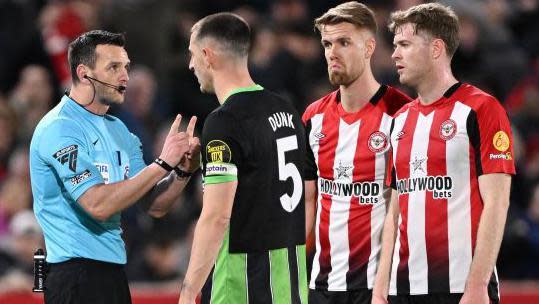'The referee makes the final judgement on all aspects'

Referees' chief Howard Webb has explained the decision not to award Brighton a penalty against Brentford during their 0-0 draw in the Premier League on 3 April.
A corner was delivered into the Bees' box and a tussle ensued between Seagulls defender Lewis Dunk and Brentford forward Yoane Wissa, before the Brighton player went down appealing for a penalty.
Initially referee Andy Madley waved the appeals away, before the video assistant referee (VAR) intervened and recommended he review the incident.
Having looked back at the full attacking sequence, he decided to stick with his on-field decision of 'no penalty', deeming Dunk to have fouled Wissa first.
Speaking on Sky Sports' Mic'd Up programme, Webb said: "It's an unusual situation. I think some people thought that the referee went to the screen and just rejected it, thinking it wasn't a penalty when the VAR did. That's not what happened.
"On every situation we check the attacking phase of play before a penalty kick or a goal, for example. And when the VAR checks the attacking phase, he can see a clear offence by Dunk on Wissa before the penalty offence.
"So the VAR then sends the referee to the screen to have a look at the full sequence, because the referee makes the final judgement on all aspects.
"The referee has gone to the screen to have a look at a full sequence and can also make a judgement on the first part of it, which is the reason why the penalty isn't given."
